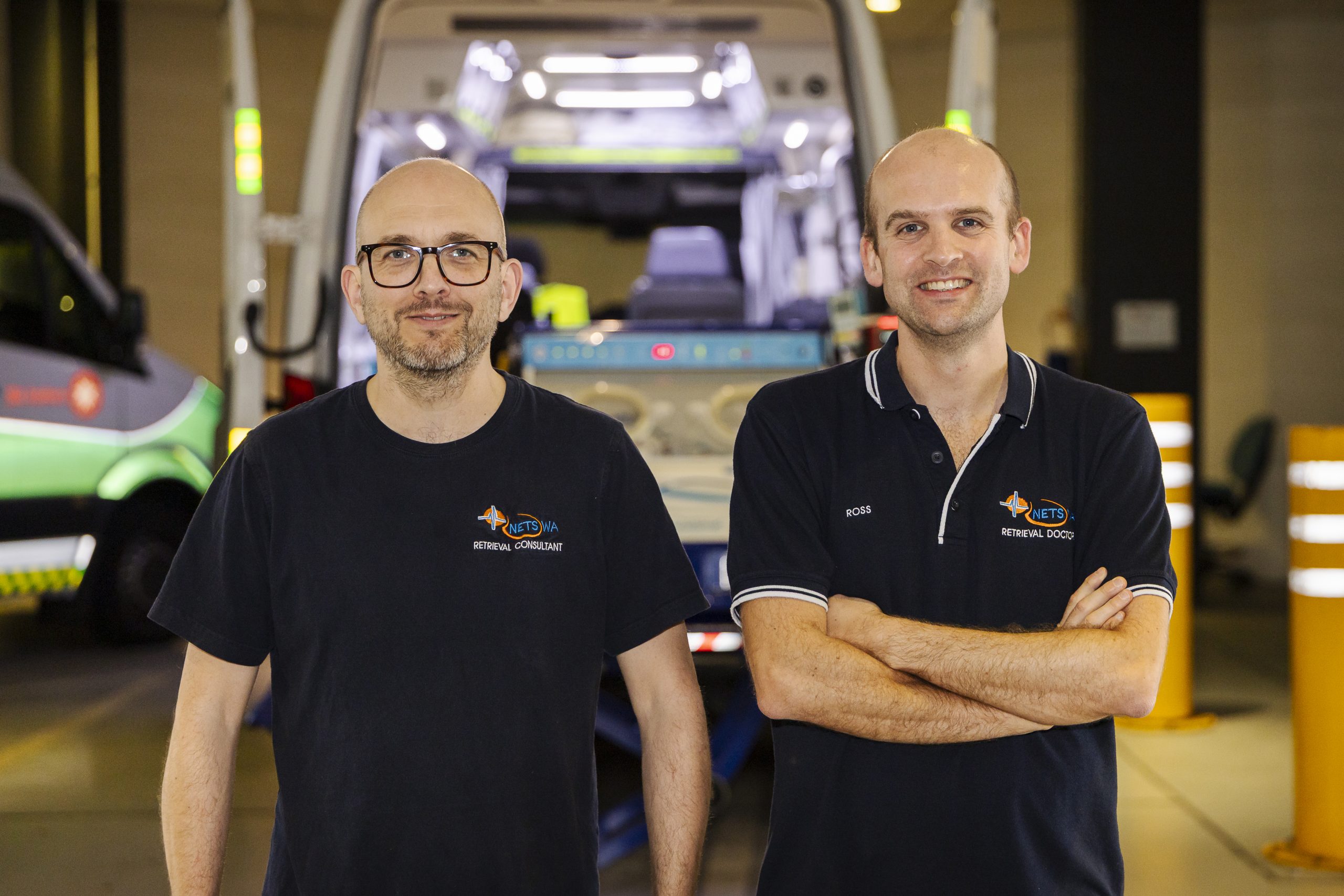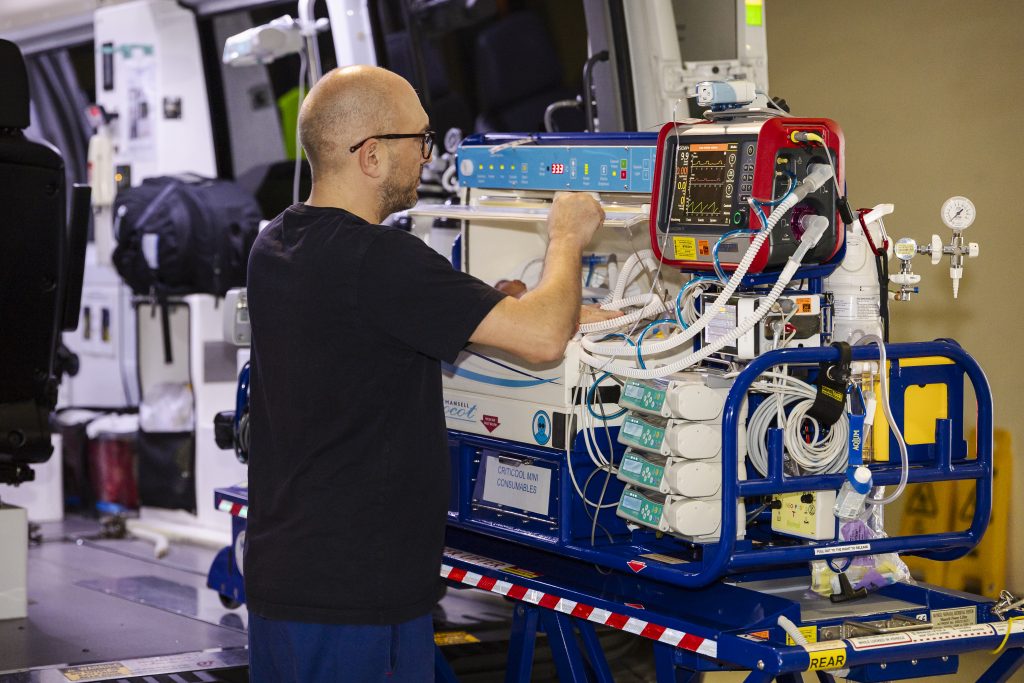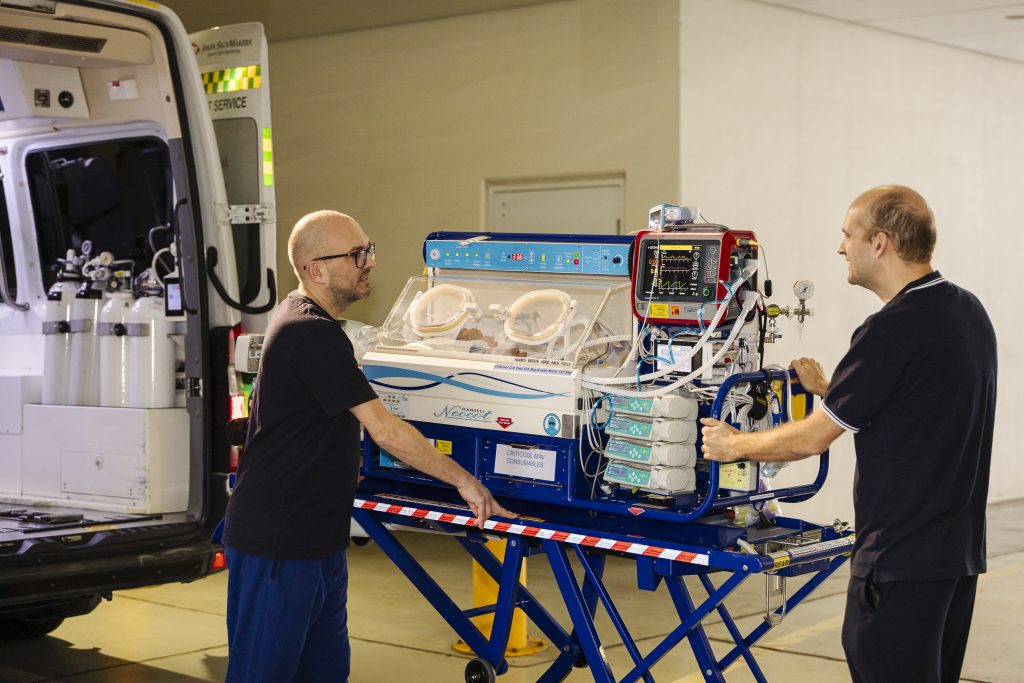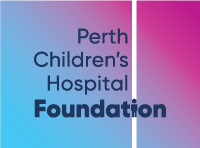
Transforming neonatal training across WA.
- Perth Children's Hospital Foundation
Transforming neonatal training across WA.
- Perth Children's Hospital Foundation
This is George. An incredibly lifelike sim manikin, he’s the first of his kind in WA.
Designed by an Australian movie special effects team, George has the same weight, lung capacity, facial features, and chest movement as a real 29-week-old preterm baby. His features include a realistic airway, a chest that can rise and fall, and skin that reseals for repeated intravenous (IV) access training.
Funded by Perth Children’s Hospital Foundation (PCHF), George is already an essential part of training programs at Perth Children’s Hospital (PCH) and with the Newborn Emergency Transport Service (NETS WA).
George’s realistic appearance allows clinicians to fully immerse themselves in high-stress simulation scenarios that mimic real-life emergencies.
“Research shows that replicating the stress and anxiety of real-world situations during training leads to better retention of knowledge and skills,” said David Barrett, Simulation Educator Coordinator at PCH. “For that to work, however, participants must believe that it’s real, which is where George’s ultra-realistic design excels.”
His compact, portable, lower-tech design makes George easier to transport, allowing for on-site training across regional WA in locations such as ambulances, cars or even in-flight simulators. This year alone, over 100 clinicians – including GPs, midwives, nurses, paediatricians, and neonatal specialists – will train with George across Perth, Port Hedland, and Geraldton.


Training sessions cover essential skills like ventilation, IV access and airway management, with the aim of improving outcomes for WA’s most at-risk newborns. In addition, George’s realism supports teamwork and communication with parents – especially during high-stress situations, such as when a baby is born not breathing.
George also plays a central role in the NeoSTARS Neonatal Stabilization and Transport Readiness program, which focuses on the ‘Golden Hour’ – the critical first hour of life for premature and low-birth-weight babies.
“The hour immediately following a preterm birth is often referred to as the golden hour. This is the period in which medical care is most effective in preventing irreversible damage,” said Dr Alexander Wilson, Neonatal Retrieval Consultant and Lead for Simulation at NETS WA.
In WA, one in 10 babies are born pre-term. Those delivered outside of major hospitals – especially under 32 weeks – face significantly higher risks of complications, with about a third arriving at hospital with dangerously low or high body temperatures.
“Keeping babies at the right temperature is crucial,” says Dr Wilson. “Evidence shows that by training staff using simulation for the Golden Hour, we can improve admission temperatures, which in turn boosts survival rates and long-term health outcomes.”
Later this year, George will support a groundbreaking ventilation training study, evaluating how new educational tools can help non-specialist clinicians improve newborn resuscitation skills.
George was funded by PCHF, thanks to the generous support of PEACH Trust Alcoa -(Personnel Employed at Alcoa Charity Help).
For more information or to donate, visit pchf.org.au/donate

